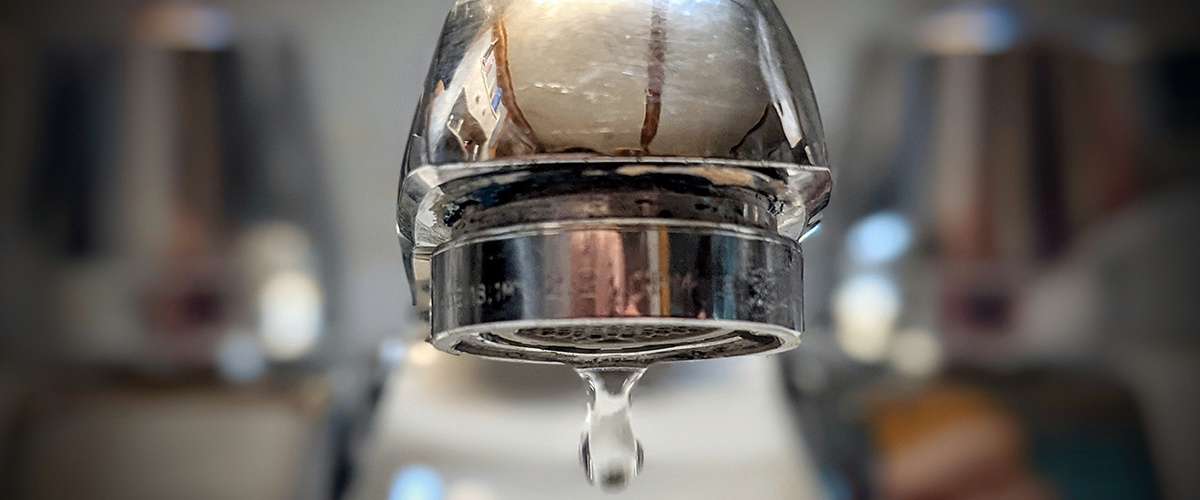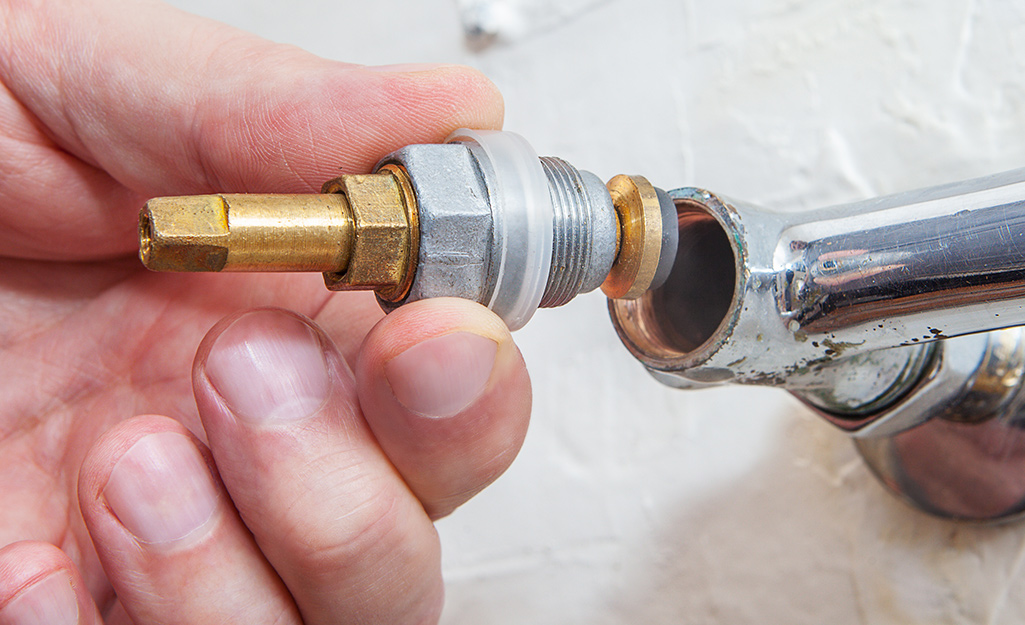What It's Significant to Fix a Broken Faucet
What It's Significant to Fix a Broken Faucet
Blog Article
Just how do you actually feel when it comes to What Causes Leaky Faucets & How To Fix Them?

Trickling faucets may appear like a minor trouble, however their effect exceeds just the aggravation of the audio. From wasting water to incurring unneeded monetary prices and health and wellness dangers, ignoring a dripping tap can bring about various repercussions. In this post, we'll look into why it's important to resolve this usual household concern promptly and efficiently.
Waste of Water
Environmental Impact
Leaking faucets add substantially to water waste. According to the Epa (EPA), a solitary tap dripping at one drip per second can waste greater than 3,000 gallons of water each year. This not just strains water resources however also affects ecosystems and wild animals dependent on them.
Financial Prices
Boosted Water Bills
Past the environmental influence, dripping taps can pump up water costs significantly. The accumulated waste over time equates into greater energy expenses, which can have been avoided with timely fixings.
Prospective Residential Or Commercial Property Damages
In addition, prolonged trickling can result in damage to components and surface areas bordering the tap. Water build-up can trigger staining, rust, and even structural problems if left neglected, resulting in extra repair costs.
Wellness Issues
Mold And Mildew and Mildew Development
The constant existence of dampness from a dripping faucet develops an excellent environment for mold and mildew and mold growth. These fungi not only endanger interior air quality but likewise posture health risks, particularly for individuals with breathing conditions or allergies.
Waterborne Diseases
Stagnant water in dripping faucets can become a breeding place for germs and other pathogens, increasing the threat of waterborne conditions. Pollutants such as Legionella bacteria grow in stationary water, potentially leading to serious health problems when ingested or inhaled.
DIY vs. Specialist Repair work
Advantages and disadvantages of Do It Yourself Repair Service
While some might attempt to deal with a leaking tap themselves, DIY fixings come with their very own set of challenges. Without correct understanding and tools, do it yourself attempts can aggravate the problem or cause incomplete repair services, prolonging the trouble.
Advantages of Hiring a Specialist Plumber
Working with an expert plumber makes certain that the underlying source of the trickling tap is resolved properly. Plumbing professionals possess the knowledge and equipment to diagnose and fix faucet issues successfully, conserving time and decreasing the danger of further damage.
Step-by-Step Overview to Taking Care Of a Dripping Faucet
Devices Called for
Prior to trying to repair a trickling faucet, gather the essential tools, consisting of a flexible wrench, screwdrivers, replacement components (such as washers or cartridges), and plumber's tape.
Usual Tap Issues and Their Solutions
Determine the sort of faucet and the details problem creating the drip. Common problems consist of worn-out washers, rusty shutoff seats, or malfunctioning O-rings. Describe maker guidelines or online tutorials for detailed advice on repairs.
Preventive Measures
Regular Maintenance Tips
To avoid trickling taps, perform routine maintenance such as cleaning up aerators, inspecting for leakages, and changing damaged parts without delay. In addition, take into consideration installing water-saving devices or upgrading to more efficient components.
Relevance of Prompt Repair Works
Resolving leaking taps as soon as they're observed protects against more water wastage and potential damage, inevitably conserving both water and money in the long run.
Impact on Residential Or Commercial Property Value
Assumption of Well-Maintained Building
Preserving a residential property in good condition, including attending to maintenance issues like leaking taps, enhances its viewed worth and value amongst potential customers or tenants.
Impact on Resale Worth
Characteristics with properly maintained plumbing components, including faucets, command higher resale values in the realty market. Attending to trickling taps can add to a favorable impact throughout residential or commercial property evaluations and settlements.
Environmental Responsibility
Individual Contribution to Conservation
Taking obligation for dealing with leaking taps lines up with broader initiatives toward water conservation and environmental sustainability. Every individual's activities jointly make a significant impact on protecting valuable sources.
Lasting Living Practices
By focusing on punctual fixings and adopting water-saving habits, individuals add to lasting living techniques that profit both existing and future generations.
Final thought
Attending to a leaking faucet goes beyond plain ease; it's a vital step towards preserving water, minimizing financial costs, and guarding health and wellness and home. Whether through do it yourself repair work or professional help, taking action to deal with trickling faucets is a tiny yet impactful way to promote liable stewardship of resources and add to a healthier, a lot more lasting future.
How to Fix a Dripping or Leaky Faucet
A leaking faucet is one of the most common problems that homeowners encounter, but it being commonplace doesn’t make it any less annoying. The constant drip drip drip of a leaking bathtub faucet, showerhead, or sink tap can disturb your home’s serenity. Left neglected, a dripping faucet can also result in higher water bills and discoloration or mold growth in your sink or plumbing fixtures.
Fortunately, you don’t have to be a trained plumber to know how to stop a dripping faucet. With some basic tools, replacement parts, and a little patience, leaky faucet repair is a breeze. In this article, we’ll explain what causes dripping faucets and how you can fix them.
What Causes a Leaking Faucet?
Kitchen and bathroom faucets come in all manner of designs, but most involve some combination of valves, O-rings, seals, and washers. The O-ring is usually the weakest link, but any one of these pieces can wear down over time. Heat, moisture, temperature fluctuations, minerals, mold, and movement can contribute to warping and corrosion, breaking the watertight seal. This just comes with the territory of being a homeowner. Everything is always subject to wear and tear, and some component parts of your appliances and fixtures need to be replaced on occasion. At least replacement O-rings are cheap!
More rarely, dripping faucets can be a symptom of excessively high water pressure. Were this the case in your home, you would probably notice that the leak is not isolated to one faucet. Water pressure issues are harder to resolve on your own. We recommend contacting a professional plumber if you suspect your water pressure is too high.
How to Fix a Dripping Faucet
Pipe wrench or monkey wrench Allen wrench set Screwdrivers Old towel or rag Shut off the water.
Before you do anything, you need to turn off the water to keep from drenching your kitchen or bathroom. You should find a valve under the sink and against the wall. Once you’ve turned this valve, try turning the faucet on to confirm that the water source has been cut off.
If you can’t locate your local valve for the faucet you’re working on, you can always shut off the water to the house at the main valve. Of course, this will prohibit anyone from using the sinks, showers, or toilets while you’re working on the faucet that’s giving you trouble.
Plug or block the drain.
You’ll be disassembling the faucet and removing some small bits of hardware. Plug the drain with a stopper or rag to avoid the possibility of a small screw falling into your P-trap.
Take apart the faucet assembly.
There are several varieties of kitchen and bathroom faucets, each with its own manner of assembly. For detailed instructions on how to disassemble your faucet, you can refer to the fixture’s manual or contact the manufacturer. If you know whether you have a ball, disc, cartridge, or compression faucet, you can find detailed schematics online.
In general, you need to begin by removing the faucet handles. You might notice a small screw that you’ll need to remove with a screwdriver or Allen wrench. If you don’t see any visible securing hardware, it’s likely hidden under a decorative cap that can be unscrewed or popped off with flathead screwdriver.
Remove each piece methodically, consulting a schematic when necessary. Take notes or arrange the pieces in such a way to make it easier to correctly reassemble the faucet later.
Remove the cartridge.
Once you’ve removed the handles and securing hardware, you should be able to remove the valve cartridge or stem. Some cartridges will slide right out. Other faucet models will require you to loosen a nut with a pipe wrench before you can remove the valve stem.
Examine the exposed hardware.
With the cartridge or stem removed, inspect the component parts. Check the rubber O-rings for wear and tear. Also examine the seat washer for corrosion or other damage. These pieces are usually the responsible parties for a dripping faucet, but it’s worth inspecting the other component parts while you have the faucet disassembled.
Find replacement parts.
Once you’ve identified which faucet component has failed, find an identical replacement. Your local hardware store should have O-rings, seat washers, and other standard components in stock. If you have a luxury or uncommon faucet, you may have to contact the manufacturer for a replacement part.
It’s a good idea to take your old parts with you to the hardware store so you can compare them with the store’s inventory and be sure you’re purchasing the correct replacement.
Reassemble the faucet.
With your new parts in hand, reconstruct the faucet and handles. Don’t be tempted to overtighten screws or nuts. You might think this could create a better seal, but it can instead damage or bend a delicate part of the assembly and create a new problem for you.
Turn on the water and test the faucet.
The only thing left to do is test your work. Unplug the sink, turn the water back on, and try the faucet. Congratulate yourself on a job well done!
https://www.libertyhomeguard.com/how-to-fix-a-dripping-or-leaky-faucet/

I have been very interested in Why It's Important to Fix Leaky Faucets and I'm hoping you enjoyed reading the new blog post. Loved our post? Please quickly share it. Help somebody else locate it. Thanks a lot for going through it.
Report this page